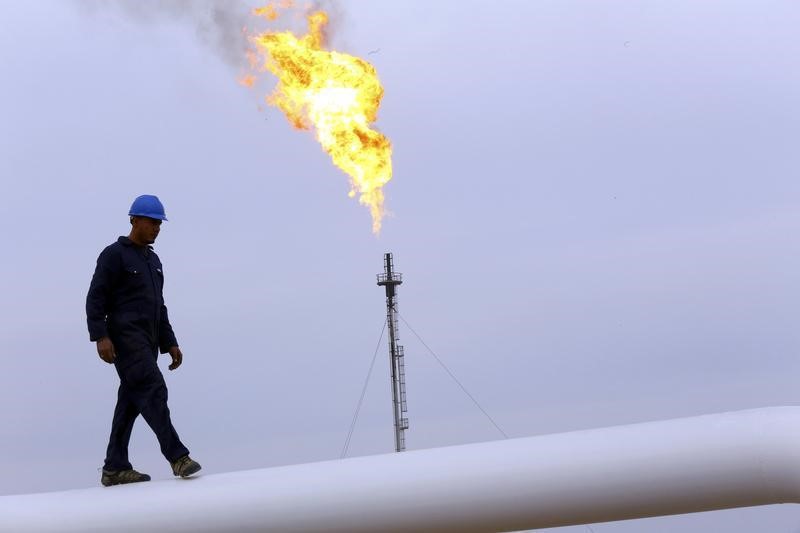Investing.com — Crude prices rose for a second day in a row but the gains weren’t enough to offset losses from earlier in the week, leaving the market in the red for a second consecutive week amid signs the Federal Reserve wasn’t done with rate hikes to bring U.S. inflation under control.
New York-traded West Texas Intermediate, or WTI, crude settled Friday’s trade up 78 cents, or 1%, at $79.83 per barrel. Despite a two-day rebound, WTI remained below the key $80 per barrel mark. The benchmark also finished the week down 1.7%, after shedding 2.3% last week. Prior to that, it rose for seven straight weeks in a rally that lifted WTI by nearly 20%.
London-traded settled up $1.12, or 1.3%, at $84.48 per barrel. Compared with WTI, Brent’s current week loss was far more modest at just 0.4%, adding to the previous week’s 2.3% drop. Before that, the global crude benchmark also rose for seven weeks in a row, rising by a total of 18%.
“Oil prices recovered a little toward the back end of the week after coming under some pressure this month,” noted Craig Erlam, analyst at online trading platform OANDA. “Supply cuts from OPEC+ continue to support the market but uncertainty over the global economic outlook – sluggish recovery in China, possible recession in the U.S. and Europe – are weighing a little.”
Friday’s rebound in oil may have been crimped somewhat by signals from the Fed that it intended to keep U.S. interest rates higher for as long as needed to bring inflation back to its long-term target of 2% per annum.
“It is the Fed’s job to bring inflation down to our 2 percent goal, and we will do so,” Chairman Jerome Powell said, opening the central bank’s annual symposium in Jackson Hole, Wyoming that has become one of the financial world’s most-watched events for anyone wanting a clue on where U.S. interest rates may be headed.
The Fed chief made clear that U.S. rates will follow inflationary pressure. “We are prepared to raise rates further if appropriate, and intend to hold policy at a restrictive level until we are confident that inflation is moving sustainably down toward our objective,” Powell said.
hit four-decade highs of more than 9% per annum in June 2022 due to trillions of dollars of federal relief spending following the 2020 coronavirus outbreak. The Fed responded with its most aggressive in 20 years, going from a base rate of just 0.25% in March 2022 to 5.5%.
While pandemic-related spending is over and price growth has stabilized at 3% per annum now, a robust labor market has allowed Americans to continue spending, preventing the Fed from achieving its target for inflation.
Weekly have continued to decline in the United States, with unemployment hitting more than 50-year lows, while average hourly earnings haven’t contracted in a single month since April 2021.
Also weighing on oil was the notion that global supplies could rise. While Russia might be deliberately putting out less oil in collaboration with the Saudis to get higher prices for a barrel, Venezuela and Iran — two other countries sanctioned by the United States — might be shipping more crude soon, reports said this week.
U.S. officials were drafting a proposal that would ease sanctions on Venezuela’s oil sector, allowing more companies and countries to import its crude oil, if the South American nation moves toward a free and fair presidential election, five people with knowledge of the plans told Reuters.
Iran also said this week its crude output will reach 3.4 million barrels daily by end-September despite Trump-era sanctions on the Islamic Republic remaining in place, without much enforcement by the Biden administration.
Reuters reports that Iran has already ramped up crude exports this year, with May’s outflow hitting a 4-1/2 year high of 1.54M barrels per day, certified by Kpler data. Iran’s production climbed to 3M barrels a day in July, reaching a 2018 high, according to the International Energy Agency in Paris.
(Peter Nurse and Ambar Warrick contributed to this item)
Read the full article here




